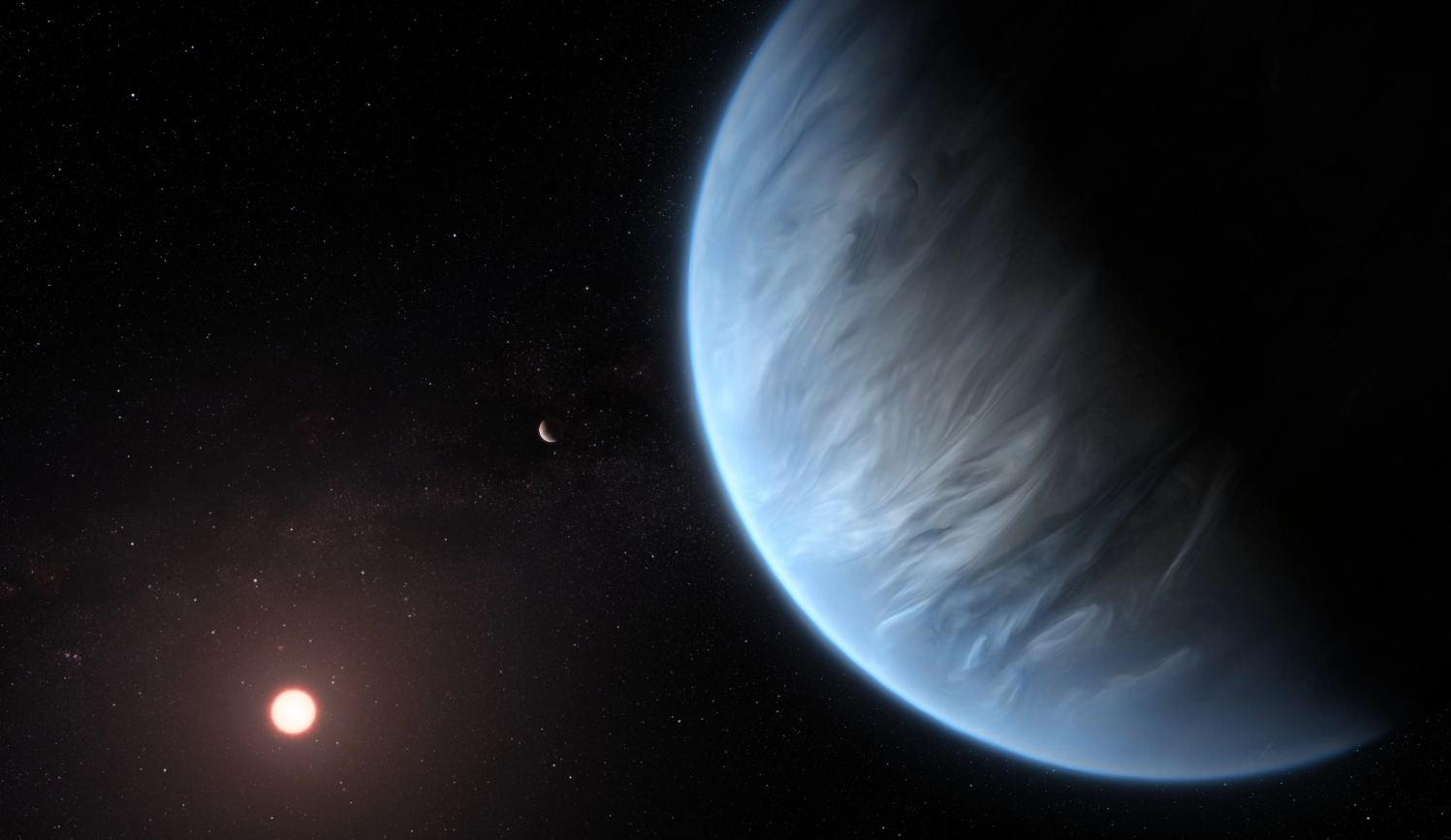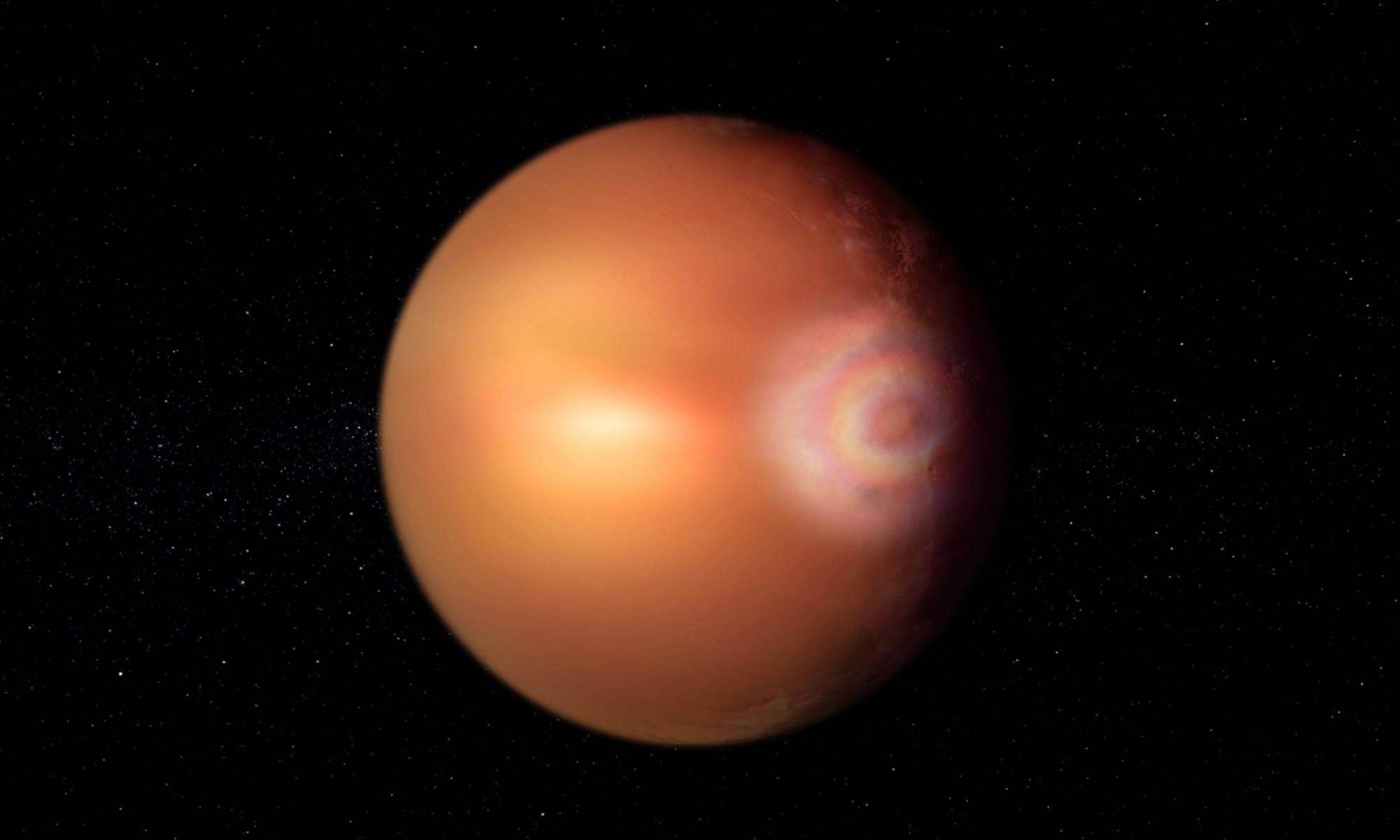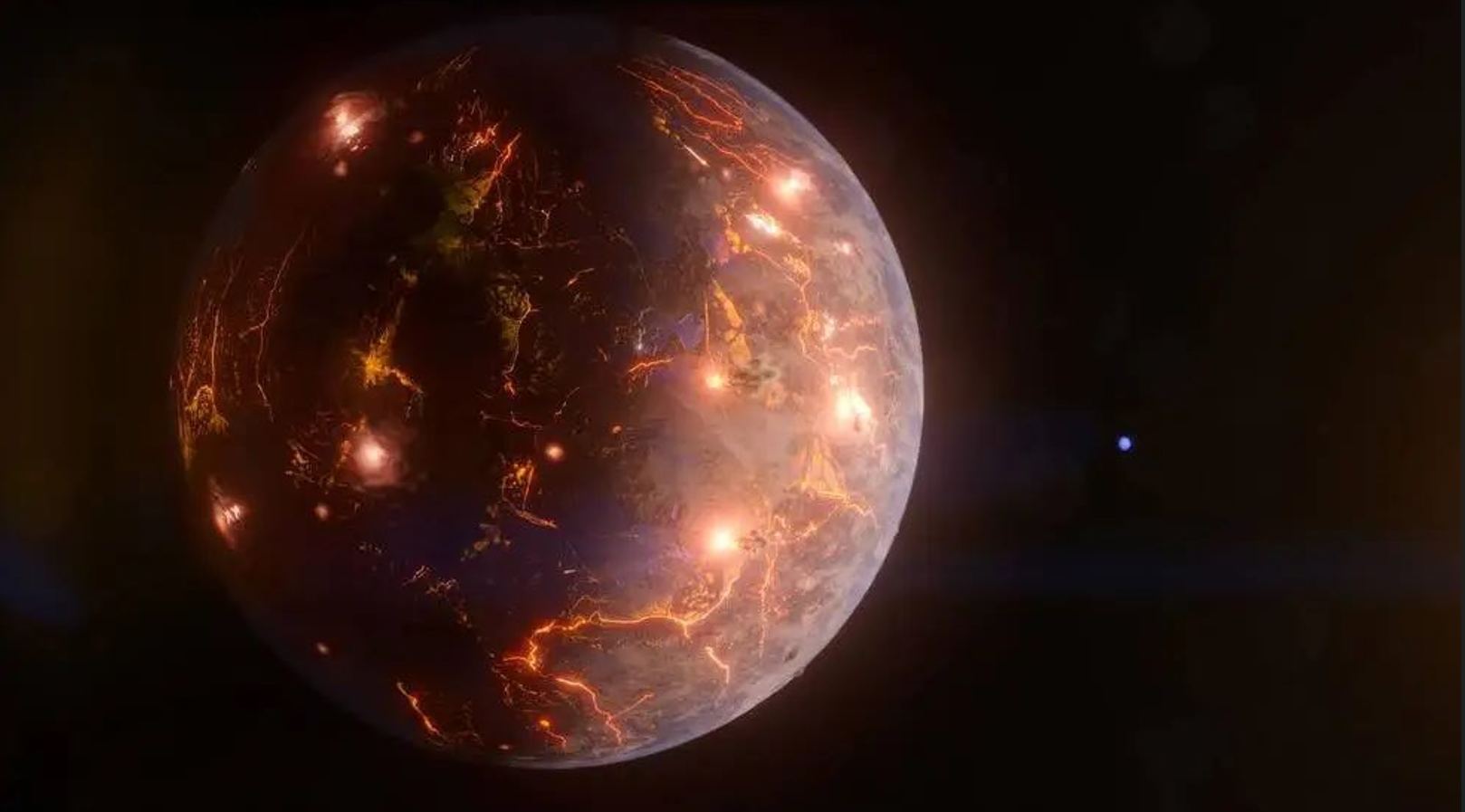Sometimes, the easy calculations are the most interesting. A recent paper from Balázs Bradák of Kobe University in Japan is a case in point. In it, he takes an admittedly simplistic approach but comes up with seven known exoplanets that could hold the key to the biggest question of them all – are we alone?
Continue reading “The Seven Most Intriguing Worlds to Search for Advanced Civilizations (So Far)”The First Atmospheric Rainbow on an Exoplanet?
When light strikes the atmosphere all sorts of interesting things can happen. Water vapor can split sunlight into a rainbow arc of colors, corpuscular rays can stream through gaps in clouds like the light from heaven, and halos and sundogs can appear due to sunlight reflecting off ice crystals. And then there is the glory effect, which can create a colorful almost saint-like halo around objects.
Continue reading “The First Atmospheric Rainbow on an Exoplanet?”Could We Directly Observe Volcanoes on an Exoplanet?
After a few decades of simply finding exoplanets, humanity is starting to be able to do something more – peer into their atmospheres. The James Webb Space Telescope (JWST) has already started looking at the atmospheres of some larger exoplanets around brighter stars. But in many cases, scientists are still developing models that both explain what the planet’s atmosphere is made of and match the data. A new study from researchers at UC Riverside, NASA’s Goddard Spaceflight Center, American University, and the University of Maryland looks at what one particular atmospheric process might look like on an exoplanet – volcanism.
Continue reading “Could We Directly Observe Volcanoes on an Exoplanet?”The Search for the Perfect Coronagraph to Find Earth 2.0
Studying exoplanets is made more difficult by the light from the host star. Coronagraphs are devices that block out the star light and both JWST and Nancy Grace Roman Telescope are equipped with them. Current coronagraphs are not quite capable of seeing other Earths but work is underway to push the limits of technology and even science for a new, more advanced device. A new paper explores the quantum techniques that may one day allow us to make such observations.
Continue reading “The Search for the Perfect Coronagraph to Find Earth 2.0”Life Might Be Difficult to Find on a Single Planet But Obvious Across Many Worlds

If we could detect a clear, unambiguous biosignature on just one of the thousands of exoplanets we know of, it would be a huge, game-changing moment for humanity. But it’s extremely difficult. We simply aren’t in a place where we can be certain that what we’re detecting means what we think or even hope it does.
But what if we looked at many potential worlds at once?
Continue reading “Life Might Be Difficult to Find on a Single Planet But Obvious Across Many Worlds”Finding Atmospheres on Red Dwarf Planets Will Take Hundreds of Hours of Webb Time
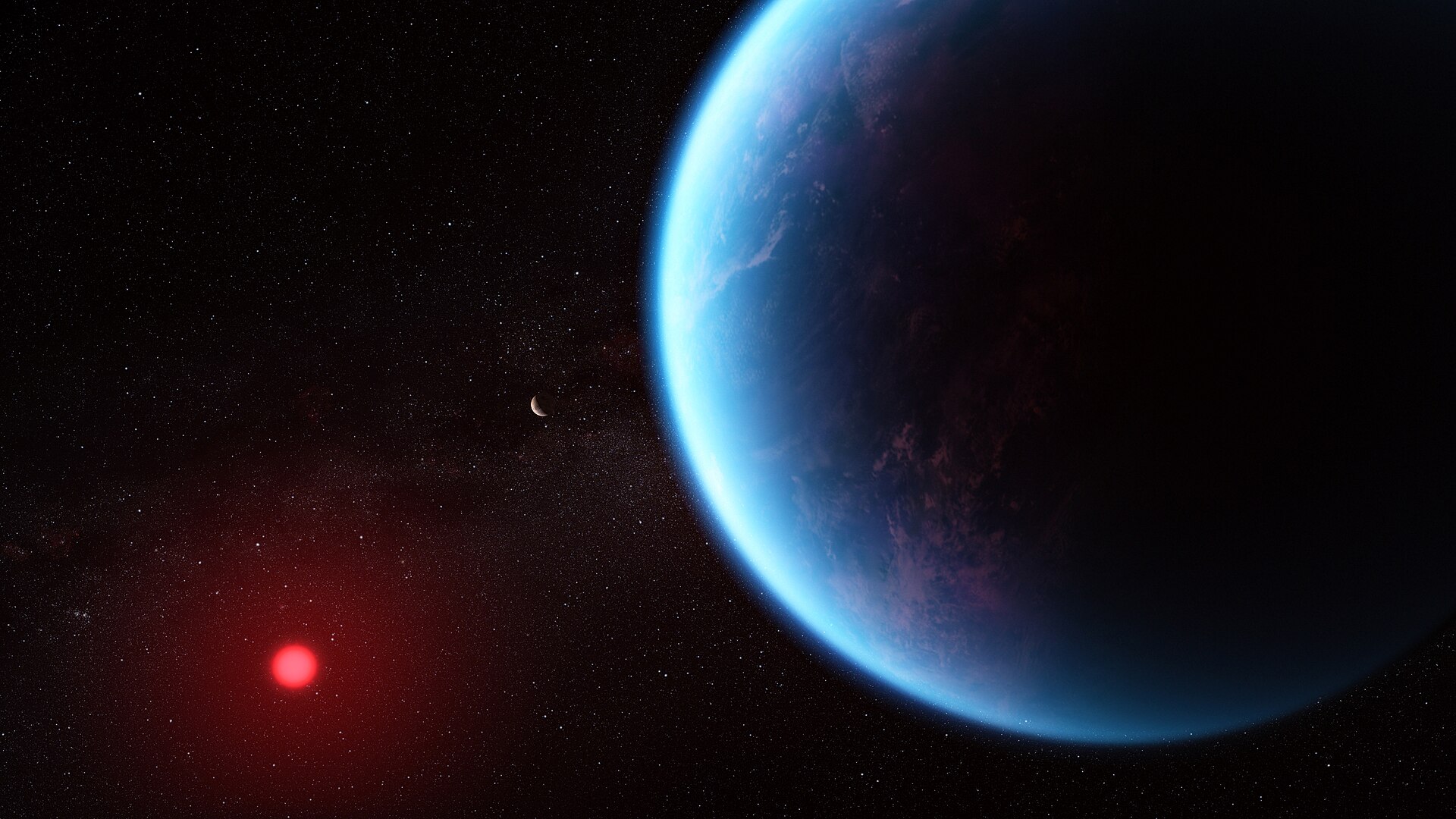
The JWST is enormously powerful. One of the reasons it was launched is to examine exoplanet atmospheres to determine their chemistry, something only a powerful telescope can do. But even the JWST needs time to wield that power effectively, especially when it comes to one of exoplanet science’s most important targets: rocky worlds orbiting red dwarfs.
Continue reading “Finding Atmospheres on Red Dwarf Planets Will Take Hundreds of Hours of Webb Time”Could Earth Life Survive on a Red Dwarf Planet?
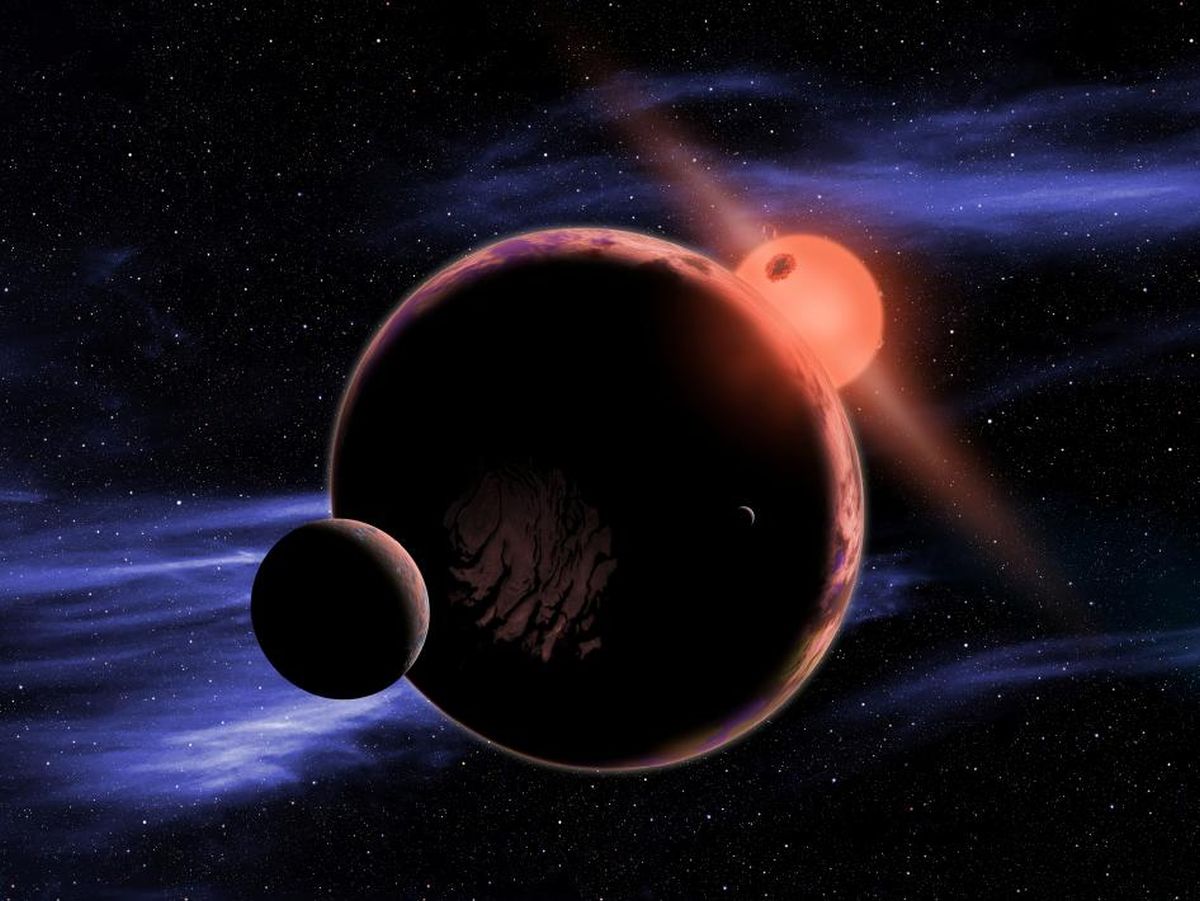
Even though exoplanet science has advanced significantly in the last decade or two, we’re still in an unfortunate situation. Scientists can only make educated guesses about which exoplanets may be habitable. Even the closest exoplanet is four light-years away, and though four is a small integer, the distance is enormous.
That doesn’t stop scientists from trying to piece things together, though.
Continue reading “Could Earth Life Survive on a Red Dwarf Planet?”Another Hycean Planet Found? TOI-270 d

Hycean planets may be able to host life even though they’re outside what scientists consider the regular habitable zone. Their thick atmospheres can trap enough heat to keep the oceans warm even though they’re not close to their stars.
Astronomers have found another one of these potential hycean worlds named TOI-270 d.
Continue reading “Another Hycean Planet Found? TOI-270 d”Webb Sees a System That Just Finished Forming its Planets
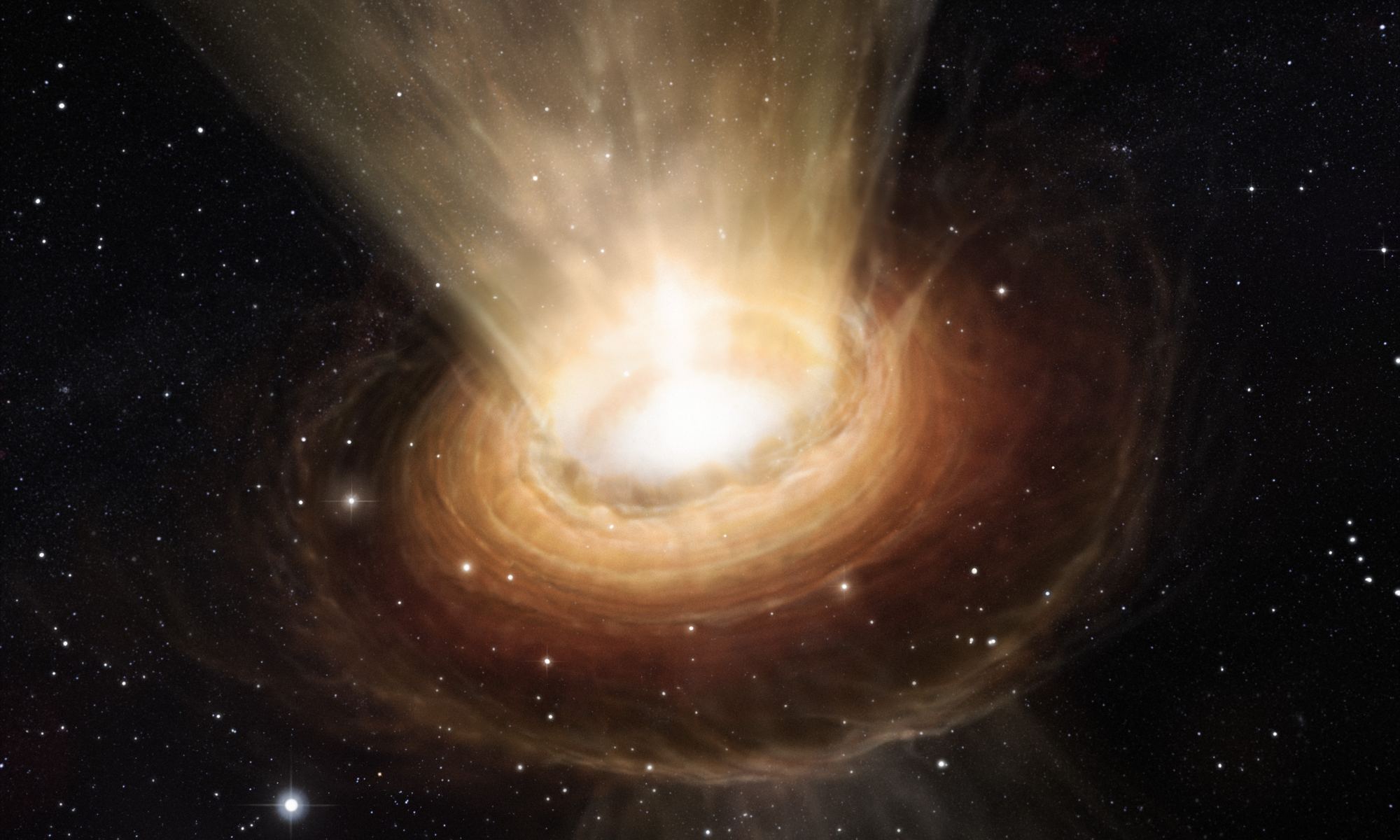
Nearly 5 billion years ago a region of gas gravitationally collapsed within a vast molecular cloud. At the center of the region, the Sun began to form, while around it formed a protoplanetary disk of gas and dust out of which Earth and the other planets of the solar system would form. We know this is how the solar system began because we have observed this process in systems throughout the galaxy. But there are details of the process we still don’t understand, such as why gas planets are relatively rare in our system.
Continue reading “Webb Sees a System That Just Finished Forming its Planets”The LIFE Telescope Passed its First Test: It Detected Biosignatures on Earth.
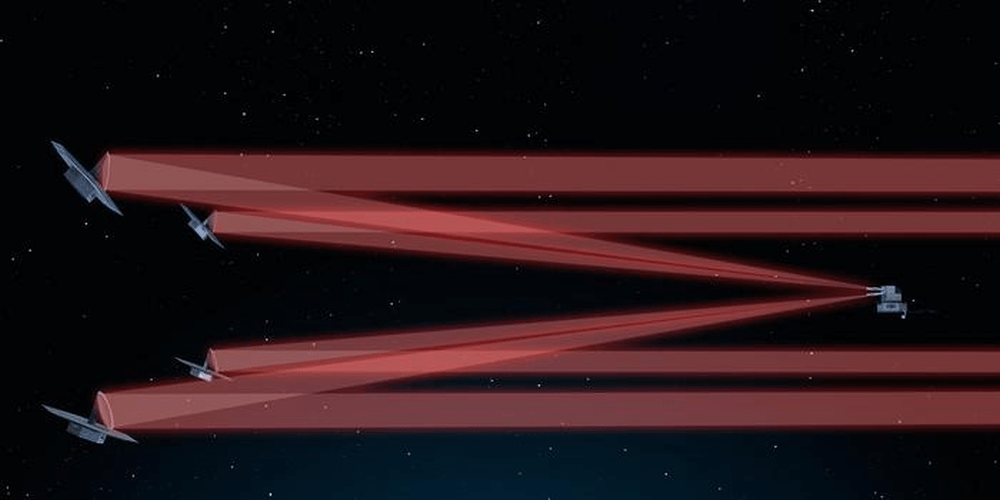
We know that there are thousands of exoplanets out there, with many millions more waiting to be discovered. But the vast majority of exoplanets are simply uninhabitable. For the few that may be habitable, we can only determine if they are by examining their atmospheres. LIFE, the Large Interferometer for Exoplanets, can help.
Continue reading “The LIFE Telescope Passed its First Test: It Detected Biosignatures on Earth.”
